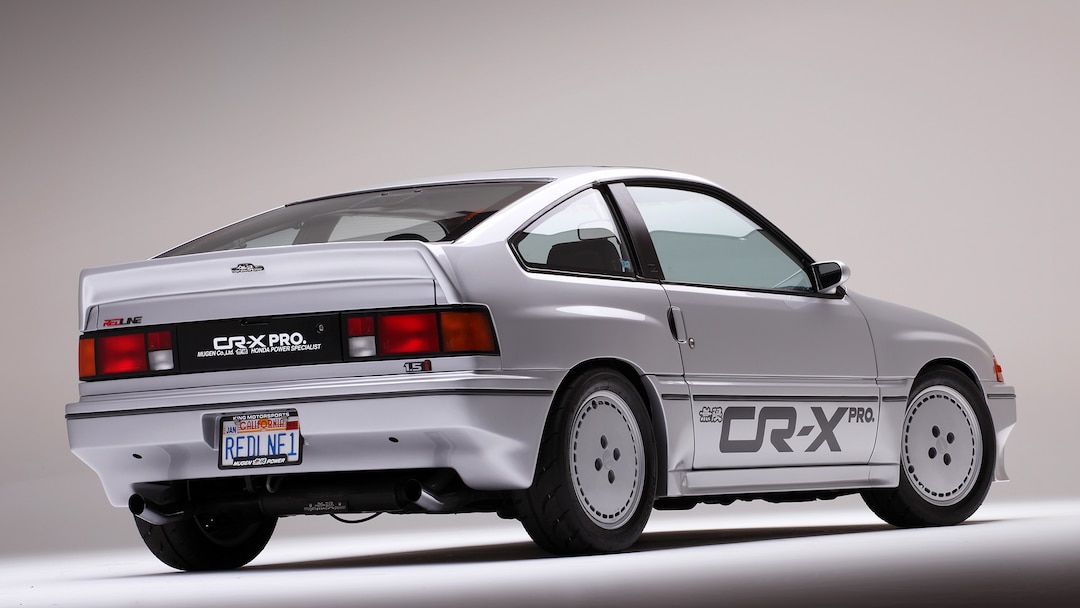Junior Asprer and the 1987 Honda CRX Si: A Legacy in Import Racing
That innocent little Civic would go on to be something incredibly special for those of us that were around Battle of the Imports during its golden era and were lucky enough to see it in action. The consistent progression, a product of the rawest form of trial and error put forth by Junior and a host of other pioneers, who constantly tinkered with any and everything they could in search of more power, traction, and lightweight alternatives, unabashedly flew in the face of domestic enthusiasts who believed a measly FWD Honda would never break the 13-second barrier. Junior did that before his peers. Then they changed that notion and said that jumping into the 12s was impossible. He smashed that too. Eventually, limited players managed to dive into 11-second territory, his best effort being a blistering 11.86 with just a built DX long block and straight T3 turbo. His was the first FWD Honda to hit that milestone in 1995. The audience that day was ecstatic, and once everyone realized what they had witnessed, the excitement in the grandstands was electric.
When in kill mode, his Civic wore gutted, mismatched body panels. Like all of the fastest Hondas in the early ’90s, it used duct tape to cover hood to fender and headlight gaps in an attempt to minimize drag during high-stakes passes. Panels and doors were often sourced from local junkyards, still bearing the handwritten inventory numbers and completely stripped to save every possible ounce. Hatches were frequently replaced with makeshift plastic windows anchored by copious amounts of even more duct tape.

Off the track, Junior’s DX was undeniably show-quality, sporting an authentic Mugen aero kit and NR10-R wheels. Its engine bay was meticulously polished, fitting the image of a standout import racer. The interior featured Recaro race buckets, and even the factory gauge cluster was replaced with a slew of custom aftermarket gauges, a rarity in street/drag cars.
Reaching Redline
Throughout the one-upmanship displayed at every Battle of the Imports, Junior and his close-knit crew, Redline, devised a plan to elevate import racing. Redline officially began in 1988 with just six cars but quickly expanded to over 20. Junior recalls, “As BOTI garnered more national attention and companies began investing in the import market, I started thinking ahead. Swaps were becoming more common, and while trap speeds increased, traction remained an issue. I wanted to leap ahead and set the precedent for the import scene.”
Greater Asprer-ations
Junior Asprer’s vision was to transform his pristine Civic into a legitimate dragster, complete with a tube-frame chassis, turbo V6, and RWD. “The aim was to maintain as much of the original Honda as possible while adapting to the traditional drag racing framework. I believed that RWD was the only way to compete at higher levels.”
The move to this new platform galvanized his resources and partnerships with fellow Redline members, each equally invested in the project’s success. Despite the ambitious goals, Junior faced setbacks, including financial challenges and difficulties with sponsors who sought to exert control over the project. As a result, progress slowed, leading to a decision to walk away from the burgeoning import drag racing scene.
Stepping Away
Following his departure from intense racing, Junior slowed his pace and pivoted towards self-discovery, diving into various motorcycle and car builds. “I had a knack for adapting to my projects, from sport bikes to classic cars,” he recounts. His journey included an array of vehicles—from 81 Celicas to a ’62 Impala and even a Harley Davidson Softail Deluxe. “It was a new world filled with fresh faces and experiences, and it allowed me to express my desire to customize and build.”
Welcome Back
In 2008, Junior reunited with Redline members to assess a first-generation CRX. He was unaware of its hidden gems—rare wheels and an old-school HKS turbo kit, prompting Calvin to purchase it. Years later, Calvin offered Junior the chance to reclaim a piece of his past with the CRX, which reignited Junior’s passion for artistry and craftsmanship in automotive culture.
With renewed enthusiasm, Junior immersed himself in the Honda community, gathering parts and connecting with old friends to restore the vehicle to its former glory. This restoration effort has reinvigorated his love for Honda and enabled him to contribute positively to the car culture he once helped cultivate.
1987 Honda CRX Si Specs
Owner: Junior Asprer
Engine: Fully balanced and blueprinted long block with OEM gaskets, seals; ARP hardware; JE 10.5:1 pistons; K&N air filter; Mugen Sports Muffler kit, header, oil cap, gas cap.
Suspension: Heeltoe Auto V1 Medieval-Pro damper kit, torsion bars.
Braking: First generation Integra front and rear discs; stainless lines.
Wheels & Tires: 15×6 Fortran AssoA301; 15×6 Mugen CF-48; 195/50-15 Toyo Proxes R888R.
Exterior: Complete Mugen Aero Line body kit; JDM corner lights, taillights.
Interior: Mugen S1 bucket seat; Alpine cassette deck and speakers for an authentic throwback experience.
This tale of transformation not only speaks to Junior Asprer’s journey but also mirrors the evolution of the import racing community. His story embodies resilience, passion, and a lasting legacy in the world of automotive culture.




